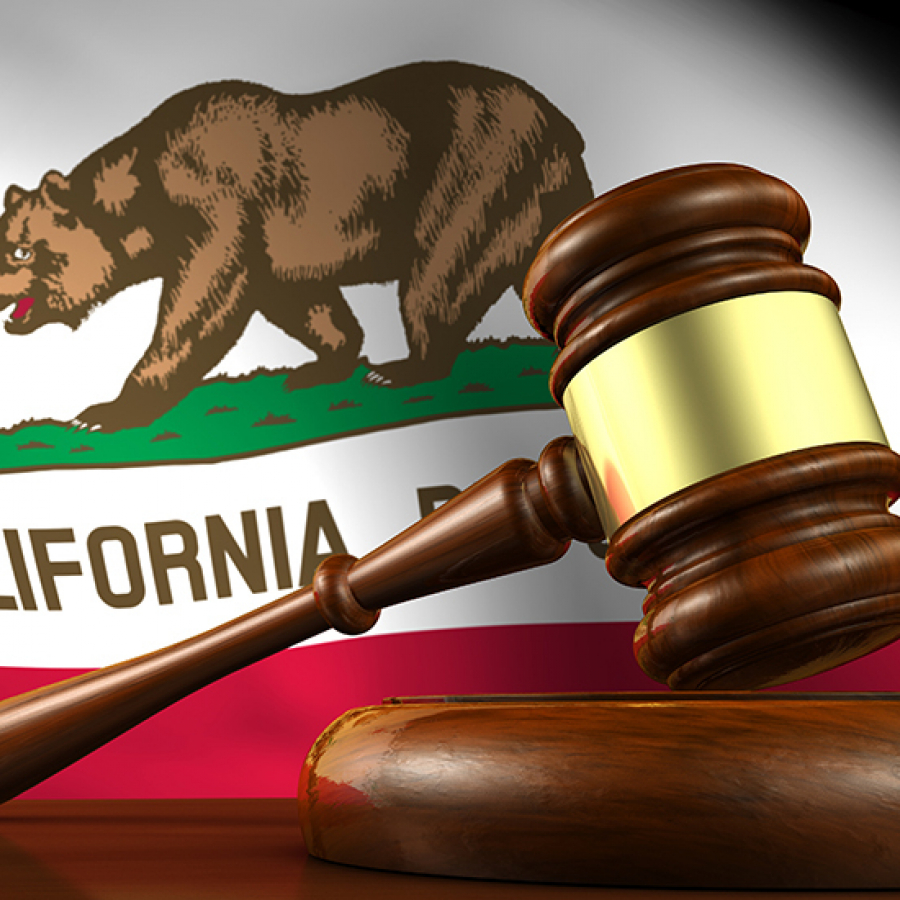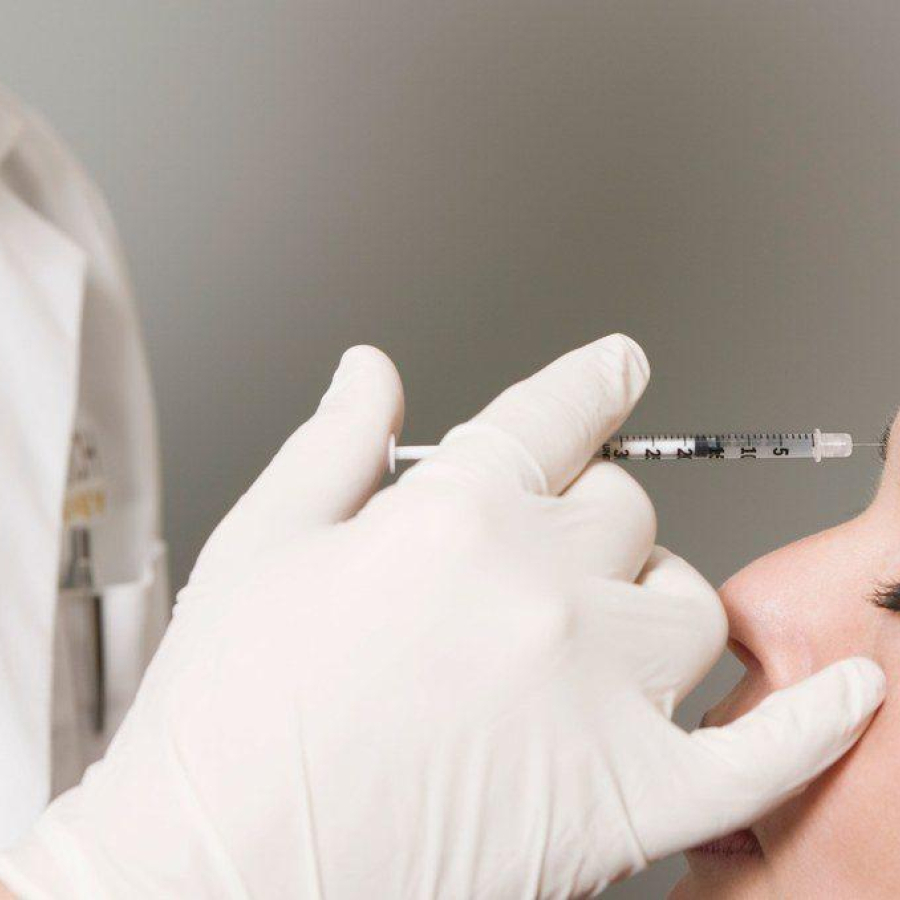
Legal
Second California Law That Affects MSOs Passes
California has now passed two laws that will have an effect on how investors, health care entities and management services ...
Posted By Mike Meyer, Monday, June 24, 2019

By Alex R. Thiersch, JD, CEO of the American Med Spa Association (AmSpa)
Update August 6, 2021: A recent news story revealed that Kim Kardashian filed trademark applications for the brand names SKKN and SKKN BY KIM, and she received a cease-and-desist letter from Beauty Concepts LLC to protect their brand name, SKKN+. In light of this high-profile trademark law news impacting a skin care clinic, we revisited this piece.
A medical aesthetic practice's brand is among its most valuable assets. When your patients think of your facility, your brand is the first thing that enters their minds. Therefore, it is vital that you take the utmost care in creating and protecting your brand, and obtaining trademark protection for it is an important part of this process. Whether you are already operating a practice or are planning to open one in the near future, this is important information to have. Here is a quick primer.
The American Med Spa Association (AmSpa) recommends that before opening, dermatology practices, cosmetic surgical practices and medical spas do a trademark search for the name that they plan on using. This isn't necessarily important if you are a plastic surgeon who plans on using his or her name for the practice (for example, Dr. Meredith Anderson's Plastic Surgery), but if your practice is a medical spa that is planning to use a name such as, say, Effervescence Medical Spa, you need to make sure that this name or a confusing similar name is not already in use.
"[Businesses] should engage an attorney experienced with trademark law to perform a search to determine whether there may be any conflicts before they even hire a graphic designer to develop a logo or business name," says Jim Stanford, partner at ByrdAdatto, a business and health care law firm based in Dallas. "I'e run into problems so many times where a company has spent all sorts of money and resources developing its name and logo only to find out that there's a conflicting use out there and they have to change everything. This typically occurs when they receive a cease-and-desist letter from the other party's attorney or when they are seeking trademark registration."
A properly conducted trademark search is a much more labor-intensive process than one might imagine.
"Typically, we hire an outside company such as Corsearch, and they'll provide a comprehensive report that's usually 200-300 pages long," Stanford explains. "We review the various uses in the report that might be similar or conflicting with the proposed mark. If there aren't any conflicts at all or registration appears feasible subject to potential challenges that are acceptable to the client, we'll proceed with the application process. But if it looks like there might be a problem, we point that out to the client and discuss the risks, and sometimes we advise the client not to use their proposed trademark and search for another."
The attorney may give the client the go-ahead to submit an application, but that doesn't mean that the process is over. First, the attorney and the client must decide what elements of the branding they need to protect.
"The application part is somewhat administrative—we need to identify the goods and services that are associated with the mark so we can determine what classes they go into, prepare a description of the goods or services, and put the application together," Stanford says. "If the client has a logo or design element to the mark in addition to the word mark itself, its often advisable to seek registration of both through separate applications to obtain broader protection."
After the application is completed and submitted, the waiting game begins.
"Once the application is finalized, prosecution of the application, that is, seeking registration with the U.S. Patent and Trademark Office (USPTO) is a pretty lengthy process," Stanford says. "We're not going to hear back from the USPTO for at least four months. From there, if there are any issues or conflicts, we have to address them with the USPTO examining attorney, and there may be some back and forth. From my experience, the quickest a trademark may be registered with the USPTO is probably 9-10 months or so—it typically takes close to a year or longer to finally get it registered, if you don't have any major issues."
The total cost of the trademark process can vary greatly from case to case, but generally speaking, it is a somewhat notable financial commitment, especially since the medical spa or practice is just beginning its journey.
"The more classes you have, the more the initial cost is," Stanford says. "The initial filing and search and clearance is typically $2,000-3,000, on average, but it's much better to spend this money up front than to have to deal with potential conflicts or lawsuits in the future that will cost a tremendous amount more to resolve."
Stanford recommends that those who seek trademark protection for their medical spa or medical practice's name and logo make sure that it meets certain conditions before the filing process begins.
"The client [should do] their best to pick something that is not descriptive of what they're doing, because that hurts the value of a mark," he says. "The marketing world and clients in general prefer to select names and trademarks that either say or describe exactly what they're offering and, from a trademark law perspective, this weakens the trademark or ability to get it registered as a trademark. [For example], 'Star Medical Spa and Skin Care Center'—would be a challenge and likely would not get registered on the principal register as a trademark because it's descriptive of the services that are associated with the mark and the only non-descriptive element is 'Star'. The more the mark is arbitrary or at least only suggestive of the goods or services associated with the mark, the stronger the trademark will be, and the better chance of obtaining registration. Assuming there were no conflicting uses, 'Effervescence' as the sole trademark and only word in any logo or design mark would be a much better mark. When you put your sign on your wall or launch your website, you can always use your trademark next to the words 'medical spa', for example, but they should not be part of the trademark itself."
Making sure that your practice's brand isn't already in use is important because the penalties for trademark or trade name infringement can be severe.
"If another party has a trademark registered with the USPTO and your mark is infringing, you have constructive notice, even if you didn't actually know about the other mark, and you could potentially get hit with the other party's actual damages, a reasonable royalty, and damages equal to your profits," Stanford said. "Including possible treble damages if your infringement was determined to be willful--it could be a nightmare and it could cost you your business."
A trademark violation could lead to major financial problems for a medical aesthetic business. Even if you'e registered a trademark with your state's department of business services (which is usually associated with the secretary of state's office), you may still be infringing on a national mark, which could lead to major problems.
Typically, however, the party owing the registered trademark will send a cease-and-desist letter and you should have the opportunity to negotiate a settlement. Although this certainly is preferable to court, the cost can still be substantial.
"The legal fees in just settling that situation could easily be $10,000-30,000, depending on how much it goes back and forth," Stanford says. "In any potential dispute, the legal fees add up very quickly."
The winners of these disputes tend to be the entity with the deeper pockets, even if they don't have a legal position that ultimately would be successful in court—they simply want to cut out competition. If your medical practice is just starting out or establishing itself in the industry, chances are that won't be you.
"I'e had matters where I didn't believe our client was infringing, but the party on the other side had more than enough money to pound our client into the dirt and we had to concede as our client couldn't afford or at least justify the legal fees to fight it," Stanford says.
A business can sink tens of thousands of dollars into marketing, product development, and branding, only to have to choose whether to redo all their branding because they'e been hit with a trademark claim, or spend at least as much money on attorneys to fight an infringement claim, even though they have a fairly decent shot of winning in the end. The enormous expense associated with court cases such as these underscores the importance of making sure that your trademark protection is squared away as soon as possible.
"You spend $5,000 up front to try to make sure you do it right to avoid $50,000 to change your mark once you find out you have a conflict," Stanford states.
One of the things ByrdAdatto always tells its clients at the beginning is that, if there is a specific name that you want to use, a trademark search should be done and, if advisable based on the situation, a trademark application should be filed. As the medical aesthetic industry grows, brands expand, and more and more large franchises emerge with a great deal of financial backing, it is simply not smart to operate without properly vetted trademark protection. Thanks to the Internet, it is easy to find a business that's violating a company's trademark, and you'd better believe that company's lawyers are actively looking for just that opportunity. You might think you have the greatest name in the world, but if you can't actually use it, it will do you far more harm than good.
AmSpa Members receive a complimentary legal consultation once per year with a ByrdAdatto attorney. Click here to learn how to join AmSpa today!
Related Tags
Medical spa news, blogs and updates sent directly to your inbox.

Legal
California has now passed two laws that will have an effect on how investors, health care entities and management services ...

Legal
A newly passed law in California will prohibit certain contractual provisions between medical and dental practices and private equity groups ...

Legal
By Patrick O'Brien, General Counsel, American Med Spa Association (AmSpa)The September bulletin from the Texas Medical Board (TMB) helps to ...

Legal
By Patrick O’Brien, General Counsel, American Med Spa AssociationOn September 23, 2025, the Alabama Board of Medical Examiners (BME) issued ...